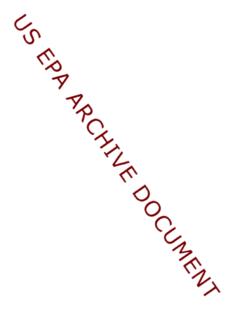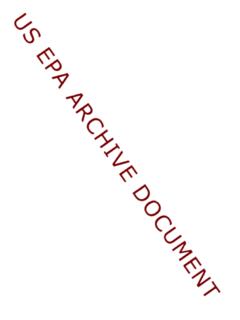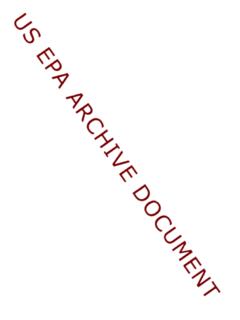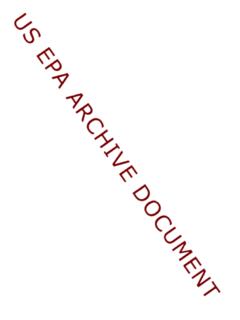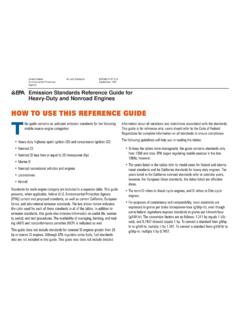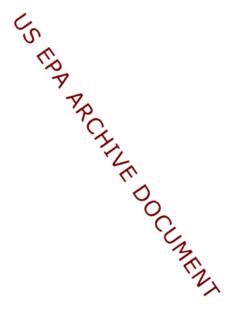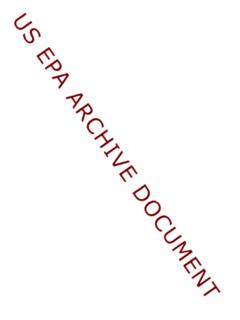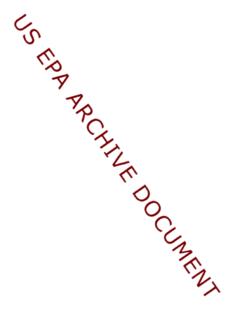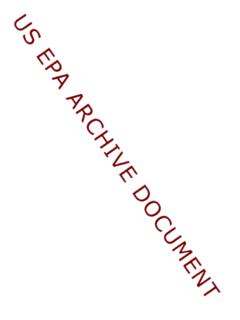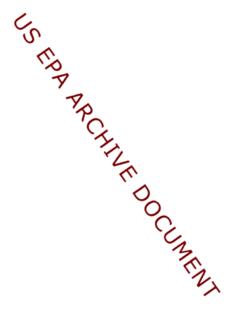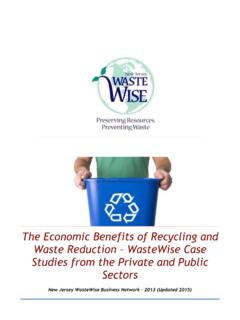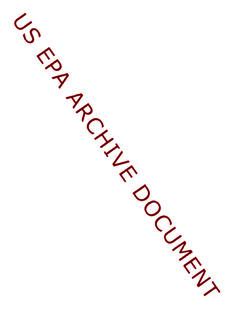Transcription of Climate Change Case Studies: PSEG Devoting Energy to Waste ...
1 Change Climate CASE STUDIES PSEG Devoting Energy to Waste Reduction Power producers face greater But PSEG s commitment does not challenges than ever end with capping CO2 emissions. In before businesses and con-January 2002, PSEG signed a volun sumers require more electricity each tary agreement with the New Jersey year, yet still demand that power be delivered efficiently and economically. Public Service Enterprise Group (PSEG), the fourth-largest independ ent power producer in North America, not only meets these Energy demands but does so with a focus on envi ronmental sustainability. Scientific evidence has pro gressed to the point where prudent action on reducing greenhouse gases is warranted. Statement of Frank Cassidy, President & COO of PSEG Power, before US Senate Committee on Commerce, Science & Technology Carbon dioxide (CO2), sulfur dioxide (SO2), and nitro gen oxides (NOx) are all byproducts of solid Waste dis posal.
2 They also constitute greenhouse gases (GHGs), the main contributors to Climate Change . Committed to reducing its impact on Climate Change , PSEG is equally focused on Waste prevention, Waste reduction, and recycling since Waste generation and treatment are contributors to GHG production. In 1993, PSEG set an ambitious goal that confirmed its dedication by the year 2000, the organization would produce no more CO2 per year than it did in 1990. PSEG reached its 2000 goal while generating almost 2 million more megawatt hours than in 1990. Department of Environmental Protection to reduce CO2 emissions from its fossil-fuel power plants by an additional 15 percent. This new target will only be achieved through a coordinated effort to invest in new technology, end process inefficiencies, and conserve resources. To ensure that it reaches its goals, PSEG partnered with the Environmental Protection Agency s (EPA) wastewise program, which provides information and support to PSEG s resource conservation program.
3 PSEG also participates in Climate Leaders another prominent EPA program to strengthen its com mitment to decreasing its impact on Climate Change . PSEG has already achieved great success with its Waste reduction programs. Since joining wastewise as a char ter partner in 1994, PSEG has reduced the disposal of municipal solid Waste by nearly 500,000 tons and pur chased more than $20 million of recycled-content prod ucts. Calculated by EPA s Waste Reduction Model, also known as WARM a tool that allows organizations to calculate GHG emissions reductions from Waste preven tion and recycling activities PSEG s Waste reduction efforts reduced GHG emissions by 192,411 metric tons of carbon dioxide equivalent (MTCO2E). PSEG s Waste Prevention Activities Stopping PSEG s computer recovery pro gram is an excellent example of an effective Waste preven tion initiative it demonstrates PSEG s commitment to reducing solid Waste and associated GHG emissions, thus reducing its environ mental footprint.
4 In the information technology area, PSEG upgrades computer technology and replaces desktop computers on an as-needed basis, and large amounts of retired equipment accumulate. The computer recovery program maxi mizes the life of these retired comput ers, preventing unnecessary Waste . To begin the recovery process, PSEG facilities send old desktop computers to the organization s Resource Recovery Center for evaluation. There, technicians sort the equip ment by type, visually inspect each piece, and evaluate the equipment for remaining useful life. They judge each type of equipment by specific criteria ( , processing speed, moni tor size, or printer type) and immedi ately separate damaged or outdated equipment. Technicians then test the remaining equipment, erase usable computers hard drives, and install new operating systems. PSEG sells refurbished equipment to employees and the general public or donates it to schools or charitable organizations for less intensive applications.
5 In the case of non-working equip ment, PSEG technicians utilize a plug and pull approach for domestic demanufacturing scavenging the working components from the equip ment for use in repairing other com puters. PSEG consolidates and ships all equipment identified for demanu facturing and recycling to a facility that shreds and recovers the con stituent materials for use in other products. As part of this process, the facility reclaims precious metals, such as gold and silver, hazardous materials, such as lead and cadmium, as well as plastics and glass. The results of this program are sub stantial. In 2002, PSEG extended the working life of 39 percent (by weight) of the equipment collected while sav ing money and supporting charitable organizations. Since 1997, PSEG has removed 370 tons of computer equip ment from the Waste stream. PSEG s computer recovery program represents one of the company s many Waste prevention initiatives.
6 The following highlights describe other successful efforts. Amount of Waste Prevented Due To The Computer Recovery Program (tons) Activity 19 97 1998 1999 2000 2001 2002 Redeployment 1. 4 Donation 19 .1 Sales Demanufacturing To t a l Lighting Residuals Management Program. Before PSEG s initia tion of the Lighting Residuals Management Program, the com pany removed in bulk or recycled all high-density discharge (HID) lamps collected during group lamp replacement, regardless of whether the lamps had failed in service or were working. Now, in order to prevent premature lamp recycling of working lamps inad vertently removed from service in the field, or thought to have failed in the field, technicians collect and test lamps for oppor tunities to determine their remaining life and reuse, or in the case of failed lamps, to deter mine if warranty issues apply.
7 In the case of failed lamps, PSEG returns the lamps for credit under manufacturer s warranty. In 2002, PSEG redeployed nearly 200 pounds of HID lamps, returned almost 380 pounds under manu-facturer s warranty, and sold more than 50 pounds. Chemical Commodity Strategic Sourcing Initiative. In 2002, PSEG launched a pilot project to reduce Waste by eliminating duplicative chemical procure ment and encouraging substitu tion of hazardous chemicals with less hazardous alternatives. PSEG now coordinates the procurement of identical chemicals for various purposes and consolidates orders, ensuring the purchase of limited surpluses and avoiding unneces sary Waste generation. (Continued on next page) Waste Before It Starts Resource Recovery Center. PSEG s Resource Recovery Center seeks out and develops pollution prevention and Waste reduction opportunities. In 2002, the Resource Recovery Center sold nearly 139,000 tons of coal combustion products for reuse as brownfield site remediation back fill, coal surface mine reclamation fill, dredge material for landfill closure capping, roadway ice and snow anti-skid product, and build ing in GHG emissions in 2002 lhouseholds.
8 PSEG's Waste Prevention Accomplishments0100200300400500600200020 012002 MTCO2E050100150200250 TonsMTCO2 ETons22 Based on WARM calculations, PSEG s Waste prevention efforts can claim a 480 MTCOE* reduc-alone. Such accomplishments are equivalent to the annual carbon storage of near y 4 acres of established, rapidly growing trees or the annual emissions from power consumption of more than 60 * MTCOE = 1 MTCE MTCE = Metric Ton of Carbon Equivalent MTCOE = Metric Ton of Carbon Dioxide Equivalent PSEG s Recycling Program Making Goals, Meeting Goals 2002 marked the seventh year PSEG exceeded its 94 percent recy in a row that PSEG met its cling rate target in three of the last goal to recycle 90 percent of four years. In 2002, PSEG removed all non-hazardous Waste commodi-more than 200,000 tons of non-ties. Having achieved that goal, the hazardous solid and universal Waste organization set forth a new goal.
9 From the Waste stream, achieving a PSEG now pledges to maintain a 94 96 percent recycling rate. Expansion percent recycling rate while preserv-of its recycling program to include ing established markets for its indus-non-routine construction materials trial products. such as treated wood from utility l2tion of nearlAts 0 2000 2001 2002 M2E 0 50,000 100,000 150,000 200,000 250,000 2E Tons Tons 22 According to wastewise s WARM calculations, PSEG s recycling efforts account for GHG emissions reductions of near y 50,000 MTCOE. These reductions based on recycling more than 400 million pounds of Waste are equivalent to the annual carbon stored by more than 400 acres of established, rapidly growing trees or the annual emissions from power consump-y 64,300 households. PSEG's Recycling ccomplishmen10,000 20,000 30,000 40,000 50,000 60,000 TCOMTCO* MTCOE = 1 MTCE MTCE = Metric Ton of Carbon Equivalent MTCOE = Metric Ton of Carbon Dioxide Equivalent Year Recycling Rate 1996 92% 19 97 1998 1999 2000 2001 2002 poles, landscape debris from power transmission right-of-way clearings, vehicle parts, washing liquids from vehicle maintenance programs, and street lamps from upgrade programs, accounted for PSEG s remarkable success.
10 The company also recycled additional Waste commodities gener ated from industry-specific processes such as manhole and underground vault cleanings, boiler cleanings, spill cleanups, and coal combustion. In 2002, PSEG spent more than and furniture containing recy-cled-content materials. Purchasing nates the Waste and Energy con sumption associated with virgin premature disposal of resources that would otherwise be sent to land fills. initiative contributes to its buy recycled program on two fronts. The organization sends empty toner cartridges back to the ven tridges for resale or recycles them loop, PSEG purchases the refilled or refurbished cartridges. By con tinually sending toner cartridges back to the vendor for refurbish ment and purchasing pre-used car tridges in return, PSEG minimizes the environmental impact of this quite lucrative as well throughout tridge program has saved the com pany nearly $400,000.
